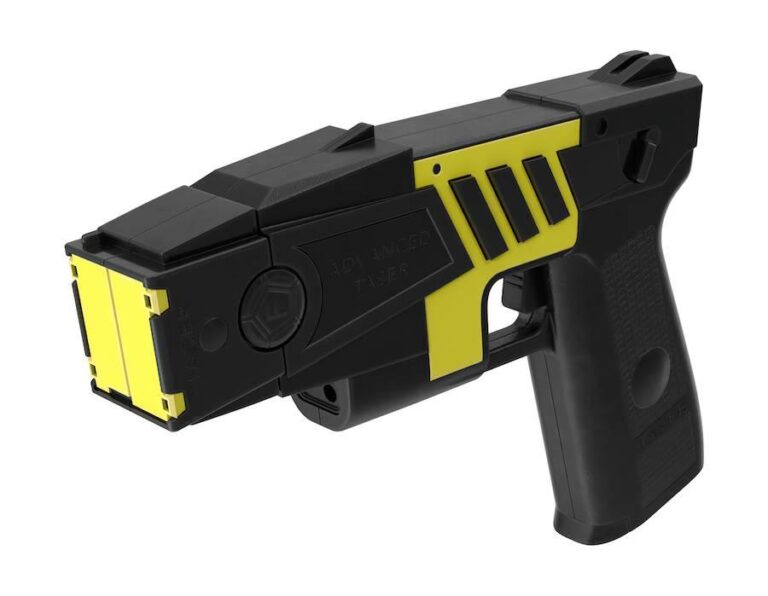Table of Contents
- Legal Classifications and Restrictions Affecting Concealed Carry of Tasers and Stun Guns
- Understanding State and Local Regulations for Effective Compliance
- Comparing Usage Scenarios and Self-Defense Implications Under the Law
- Best Practices for Safely Carrying and Using Electronic Self-Defense Devices
- Wrapping Up
Legal Classifications and Restrictions Affecting Concealed Carry of Tasers and Stun Guns
Understanding the legal landscape surrounding Concealed Carry of Tasers and Stun Guns requires recognizing that their classification varies significantly across jurisdictions. In several states, Tas ers are regulated more stringently than stun guns due to their ability to incapacitate from a distance, falling under the same category as firearms or weapons requiring permits. Conversely, stun guns often enjoy more lenient treatment but can still face prohibitions in sensitive areas such as schools, government buildings, and airline terminals. This variance means obtaining a permit or license often hinges on whether the device is classified as a non-lethal weapon or a restricted arm.
Restrictions also encompass age requirements, where many states mandate carriers be 18 or older, with some setting higher age thresholds for Tasers given their increased power. Additionally, certain municipalities have outright bans or limit possession to law enforcement personnel. When considering concealed carry, prospective owners should be aware of common legal stipulations which may include:
- Mandatory background checks
- Prohibition of concealed carry in specific public spaces
- Specific holster or carry methods mandated by law
- Restrictions on carrying across state lines without reciprocity agreements
Understanding State and Local Regulations for Effective Compliance
When it comes to carrying Tasers or stun guns, navigating the complex web of state and local laws is crucial to remain legally compliant. Each jurisdiction may have distinct definitions and restrictions, so understanding these nuances can mean the difference between lawful self-defense and legal trouble. Some states classify Tasers as firearms or restricted devices, requiring permits or even prohibiting their possession entirely. On the other hand, stun guns often fall under different regulatory categories, sometimes with fewer restrictions but varying by locality. Aligning with your specific jurisdiction’s rules ensures you don’t unintentionally violate laws that could result in fines, or worse, criminal charges.
To simplify compliance, consider the following key points before choosing a device:
- Permit requirements: Verify if your state or city mandates a concealed carry permit for the device.
- Age restrictions: Some regions impose minimum age limits for ownership or carry.
- Usage regulations: Understand where and how these devices can be legally carried and deployed-public buildings, schools, and public transport often have specific prohibitions.
- Travel considerations: Laws vary dramatically when crossing state lines; some states that allow Tasers or stun guns may not permit them in others.
Comparing Usage Scenarios and Self-Defense Implications Under the Law
When evaluating the practical use of tasers versus stun guns within self-defense frameworks, one must consider the *remove-and-immobilize* capability of tasers in contrast to the *close-contact incapacitation* offered by stun guns. Tasers typically project electrical probes several feet away, allowing the user to maintain distance and reduce personal risk-an advantage that is often favored by law enforcement and civilians alike. However, this feature also subjects tasers to stricter legal scrutiny, with many jurisdictions regulating or prohibiting their concealed carry due to potential misuse concerns. Meanwhile, stun guns require physical contact, which may limit their effectiveness but often results in fewer legal barriers, making them more accessible for everyday concealed carry.
Legal implications further diverge based on how each device interacts with law enforcement and self-defense claims:
- Tasers: Because tasers can incapacitate from a distance, courts may view their use as more forceful, affecting the proportionality assessment in self-defense cases.
- Stun Guns: Their necessity for close proximity often aligns their use with immediate, reactive defense rather than premeditated aggression, sometimes influencing leniency under the law.
- Concealed Carry Restrictions: Many states restrict taser possession or require permits, while stun guns are generally subject to fewer regulations or bans.
- Law Enforcement Encounters: Using either device in a confrontation with police requires clear justification to avoid escalation or legal complications.
Best Practices for Safely Carrying and Using Electronic Self-Defense Devices
When handling electronic self-defense devices, prioritizing safety and legality is essential. Always ensure that you are thoroughly familiar with your device’s operational instructions and limitations before carrying it in public. It’s crucial to keep the device accessible but secure, ideally in a holster or case that prevents accidental discharge. Regularly check that batteries are fully charged to avoid device failure during emergencies. Remember, proper maintenance and inspection extend the effective life of your device and prevent malfunctions that might put you at risk.
Adhering to local regulations and laws surrounding concealed carry is non-negotiable. Many jurisdictions have strict rules about where and how electronic self-defense tools can be carried and used. Key practices include:
- Registering the device with local authorities if required.
- Understanding no-carry zones such as schools, government buildings, and private properties.
- Using the device only in situations where personal safety is legitimately threatened.
Respect for legal boundaries and responsible handling not only ensure your safety but also protect you from legal repercussions. Taking time to stay informed about changes in concealed carry laws helps you avoid unintentional violations, making self-defense both effective and lawful.
Wrapping Up
In conclusion, understanding the key legal distinctions between tasers and stun guns is crucial for anyone considering these devices for concealed carry. While both offer non-lethal self-defense options, their classification, usage regulations, and carry restrictions can vary significantly depending on your jurisdiction. Staying informed about local laws ensures not only your safety but also compliance, helping you make the best choice for personal protection. Always remember to check the latest regulations and, when in doubt, consult legal experts to navigate the complexities of concealed carry laws effectively. Stay safe and empowered!Check Our Other Blogs
- StunGun – Your Trusted Source for Stun Guns, Laws, and Self-Defense Tips
- PepperSprayLaws – Your Trusted Resource for Pepper Spray Information
- StunGunLaws – Your Trusted Guide to Stun Gun Legality and Safety





